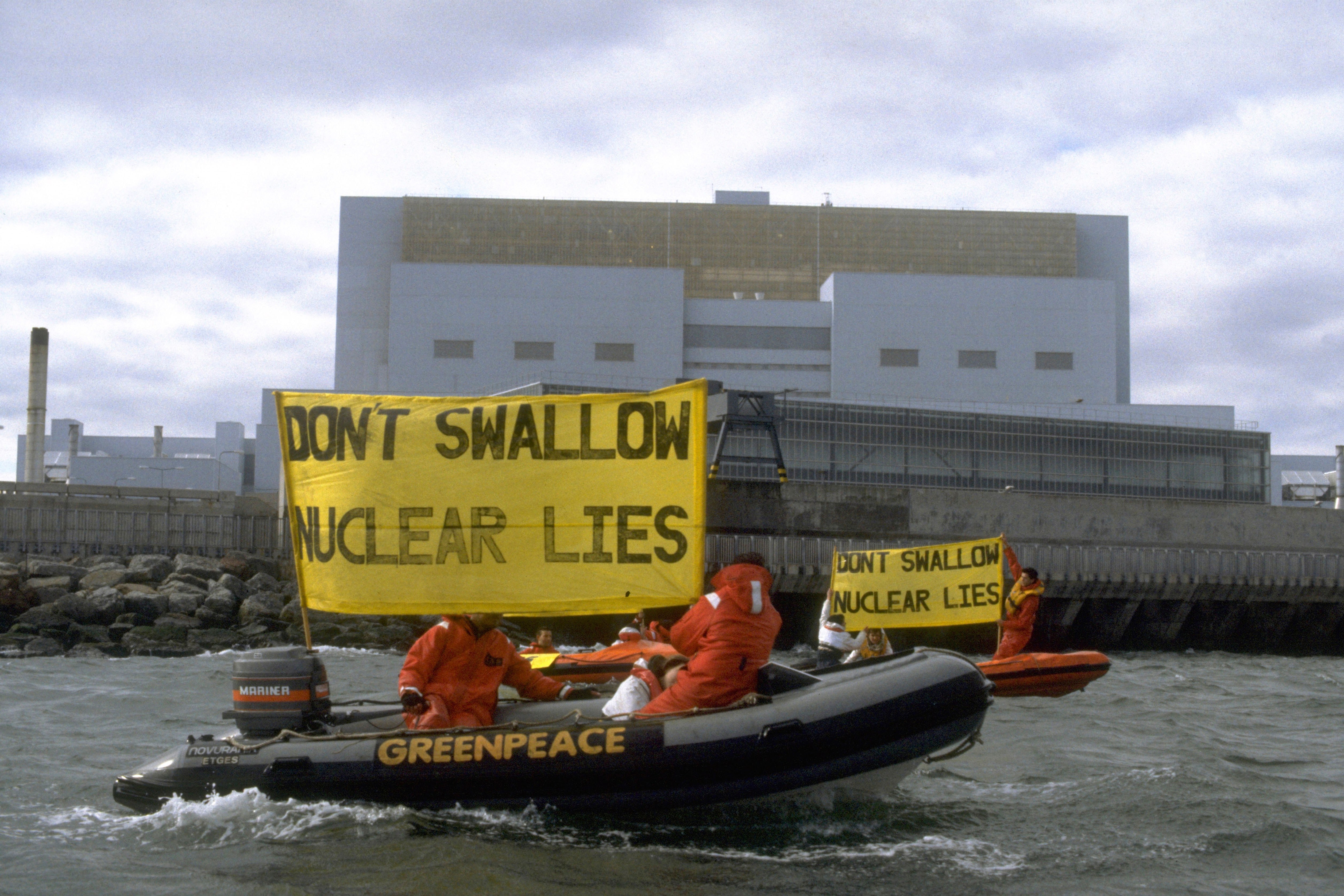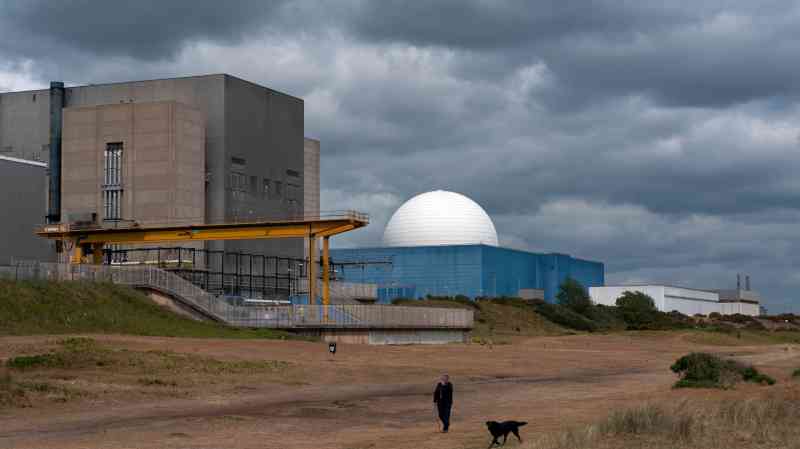EDF’s announcement last week that it was closing the Dungeness B nuclear plant in Kent seven years early punched an unwelcome hole in Britain’s low-carbon power supplies. Now, The Times can reveal that further such blows are likely to follow as EDF admits that two other plants are also at risk of early closure.
The French energy giant is bracing for safety issues at Torness in Scotland and Heysham 2 near Lancaster that could force both to shut years before their planned 2030 closure dates.
The disclosure shines a spotlight on the failing health of the nuclear fleet, raises questions about Britain’s ability to keep decarbonising electricity supplies this decade and adds renewed impetus to the debate over new nuclear plants.
Dungeness is one of Britain’s eight nuclear plants, which until recently had together generated about a fifth of the country’s electricity needs. EDF acquired them in 2008 and secured regulatory approval to significantly extend their lifespans. Only the most modern plant, Sizewell B in Suffolk, has ever been expected to keep running beyond 2030, but EDF aimed to keep all seven of the older, advanced gas-cooled reactor (AGR) stations running until at least 2023, bridging the gap until new plants such as its Hinkley Point C project were supposed to be built.
“Existing nuclear can hand over directly to the next generation of nuclear power stations without the need for more fossil fuel generation,” it claimed in 2014.
The plan has not worked out. The new-build programme has faltered with only Hinkley Point C under construction, and that delayed until 2026. Now it is proving unattainable to extend the life of some of the old plants. EDF has already announced that Hinkley Point B and Hunterston B, the first two AGR plants to open in 1976, will shut by next year rather than 2023 as planned because of cracking in the graphite cores that has already caused prolonged safety outages.
Dungeness B, which has been offline since 2018 for maintenance, will not restart and run until 2028 as planned, despite investment of more than £200 million. Richard Bradfield, chief technical officer at EDF, said it faced insurmountable risks stemming from poor decisions during the plant’s uniquely troublesome 18-year construction. Steel boilers have corroded and cannot be replaced, and there are problems with components in the part of the reactor that holds the fuel. “The risk associated with that component is, ultimately, we could drop fuel,” he said. “That’s an unacceptable position and a contributing factor to our decision.”
How long can the other four AGR plants last? That depends on when cracks in the graphite cores emerge, as they did at Hinkley and Hunterston. EDF has ploughed £200 million into studying that issue to establish what level of cracking can be tolerated safely. Another two plants, Heysham 1 and Hartlepool, are expected to start cracking soon and are due to shut by March 2024 — although Bradfield said EDF was “reviewing the possibility” it could run them slightly longer if they did not develop cracks by 2023.

The two newest AGR plants, Torness and Heysham 2, are not due to shut down until 2030, but Bradfield warned that the likelihood of cracking meant “it could be earlier”. They have already generated almost as much power in running for 33 years as Hinkley and Hunterston have in 45 years. “That’s important because it’s the irradiation or the amount of electricity that’s generated that effectively is the input to when the graphite cores will start cracking,” he said. When cracks emerge, the plants will have only three or four years left. EDF is bracing to see cracks soon and “the probability will increase over the next few years”.
Even without more early closures Britain faced a looming gap in nuclear power supplies, said Tom Greatrex, of the Nuclear Industry Association. Losing five plants by March 2024 meant nuclear capacity would fall by more than half. Greatrex predicted that this would stall the process of decarbonising the electricity system, arguing that although Britain was building more wind farms, with nuclear plants shutting “you’re not actually making any progress, you’re standing still at best”.
Iain Staffell, senior lecturer in sustainable energy at Imperial College London, estimated that the loss of Dungeness “will add 6 per cent to the country’s electricity sector emissions in 2022” with more electricity from gas-fired plants filling the gap.
“It’s not as though we haven’t been saying for a long period of time that this fleet is coming towards the end of its life and if you want that firm low-carbon capacity you need to do something about it,” Greatrex said. “The failure is in public policy in enabling that fleet to be replaced quick enough.”
The nuclear industry wants government support for EDF to build a second new nuclear plant at Sizewell in Suffolk and revive the wider new-build sector.
While critics such as Doug Parr of Greenpeace dismissed new nuclear as an “appalling distraction” from the “most cost-effective” solution of renewables, Greatrex countered that government and Climate Change Committee forecasts both suggested new nuclear was needed for the future.
However Martin Young, analyst at Investec, said that a looming low-carbon power gap may favour developers of rival low-carbon technologies or storage solutions that may be quicker to build. He said: “Whatever you may think about new nuclear — and it’s clear that the industry has not shown it can deliver new-build on time and at a competitive price — we are not going to be getting a new nuke [over and above Hinkley Point C] any time soon.”
Behind the story: Long goodbye for reactors at Dungeness
It took 18 years to build, generated electricity for 35 years and has spent three years undergoing ultimately unsuccessful repair efforts. But as Dungeness B shuts for good, the history of the site is far from over: it is unlikely to be fully dismantled for a century (Emily Gosden writes).
The first stage, defuelling, is likely to take EDF up to six years. The uranium fuel for Dungeness’s two reactors is housed in 816 “fuel assemblies”, each containing seven one-metre-tall fuel elements stacked on top of each other in a channel.
Ordinarily the fuel in 15 assemblies is replaced every few months but now they must all be removed, initially to a storage pond, essentially a large swimming pool, for cooling on site for at least 90 days.
Then the spent fuel is packaged into a flask the size of a large skip and sent by rail to Sellafield in Cumbria, where it will be further processed and put in “interim” storage for up to 70 years. Ultimately it is destined for a permanent underground disposal facility, which is yet to be built.
At Dungeness, once defuelling is complete, responsibility for the site transfers to the UK’s Nuclear Decommissioning Authority. All non-essential buildings and infrastructure will be removed, leaving just the reactors in safe storage. The site goes into care and maintenance for up to 85 years to allow for the radioactivity to decay within the reactors so that they too can be safely dismantled a century from now.
